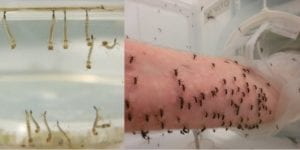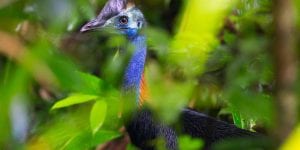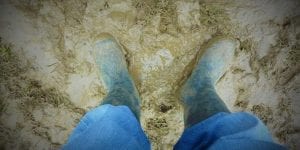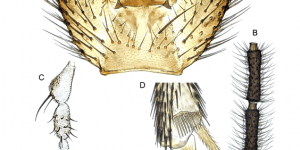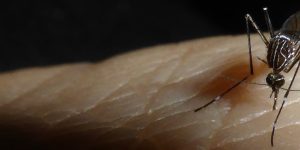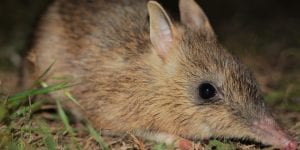Category: News
-
A long way to go for a small species
Words: Daronja Trense Images: Daronja Trense & Klaus Fischer One of the projects of my PhD is to investigate the genetic connectivity of the Copper butterfly (Lycaena tityrus) in the Ötzvalley of the European Alps. In summer 2018, we collected 186 butterflies to understand how the geological structure of the valley has influences the genetic […]blogs.unimelb.edu.au/pearg/2018/12/19/a-long-way-to-go-for-a-small-species
-
How to Tackle the Climatic Threats to Australia’s Eco-System | Ary interviewed on 102.7 3RRR
Please follow this link to Ary’s recent interview on Three Triple R FM -
Living a life of luxury in the laboratory
Words and images: Perran Ross Mosquitoes in the wild live it rough. Adult females risk being swatted as they search for a blood meal and their larval progeny must fend off predators and compete for limited resources. When we want to study mosquitoes under controlled conditions we bring them into the laboratory, but these conditions […]blogs.unimelb.edu.au/pearg/2018/11/29/living-a-life-of-luxury-in-the-laboratory
-
NEW PUBLICATION | Impacts of recent climate change on terrestrial flora and fauna: Some emerging Australian examples
Words: Nick Bell Header image: Johan Larson, Department of Tropical Biology, James Cook University Together with a team of experts from across Australia, PEARG has recently published an open access review in Austral Ecology. The review outlines eight case studies which demonstrate the effects of climate change on the nation’s native flora and fauna. We’ve […] -
In the ‘field’ of science
Words: Samantha Ward If I ask you what is involved in studying for a PhD, a Doctor of Philosophy, a higher or postgraduate degree in science, what do you envisage? The terms are different, but I’m sure the image is the same. How do you imagine a Science PhD? Credit: Cindy Schultz via Flickr Most people […] -
The platypus: another impending extinction?
Words: Samantha Ward The duck-billed platypus has always been something of an enigma. When the first pelt and sketch were sent back to Europe at the end of the 18th century, many British scientists refused to accept the platypus was a real organism. Instead, they believed it was an assortment of animal parts that had been […]blogs.unimelb.edu.au/pearg/2018/11/01/the-platypus-another-impending-extinction
-
Congratulations to Ann Stocker | fungus gnat species named
Image credit: Zootaxa Congratulations to Ann for being recognised for her extensive contributions to our understanding of Australian flies. A species of Victorian fungus gnat (Diptera: Sciaridae) has been formally described and named Austrosciara stockerae. You can read about the taxonomic details in a recent Zootaxa article here. The dedication blurb A bit about Ann […]blogs.unimelb.edu.au/pearg/2018/10/24/congratulations-to-ann-stocker-fungus-gnat-species-named
-
SEEKING MSc STUDENT | Buruli Ulcer’s Most Wanted – Understanding the mosquito associated with the flesh-eating bacteria, Mycobacterium ulcerans
Aedes notoscriptus has been identified in association with the emerging bacterial pathogen Mycobacterium ulcerans, which causes Buruli ulcer, as well as being a vector of Ross River virus. Key ecological features such as bloodmeal feeding patterns and movement dynamics of individuals are however not clearly defined. This project will involve both laboratory and field-based components. Field […] -
BACK FROM THE BRINK | CROWDFUNDING FOR THE GENETIC RESCUE OF EASTERN BARRED BANDICOOTS
Words: Anne Aulsebrook Cover image: Mount Rothwell Conservation and Research Centre An article published in 1934 describes the flavour of bandicoot stew. ‘After chewing a mouthful I gave up.’ The writer states, ‘The stew tasted like roots. I have not sampled stewed bandicoot since.’ At the time of the article, bandicoots in Australia were already […] -
The economic benefit of biodiversity in agriculture
Words: Linda Thomson Image: Zagrammosoma latilineatum by Elia Pirtle Along with sustainability, biodiversity is a current catchword. Our work demonstrating the benefits of non crop vegetation on increasing biodiversity and especially “beneficials’ which contribute to pest control in crops. Enthusiasm for the project is shown by the excellent attendance at a recent workshop – report of […]blogs.unimelb.edu.au/pearg/2018/09/07/the-economic-benefit-of-biodiversity-in-agriculture
Number of posts found: 66


